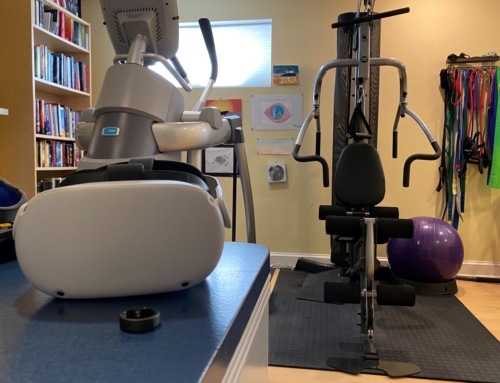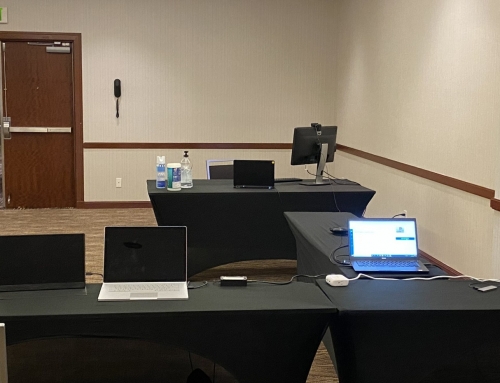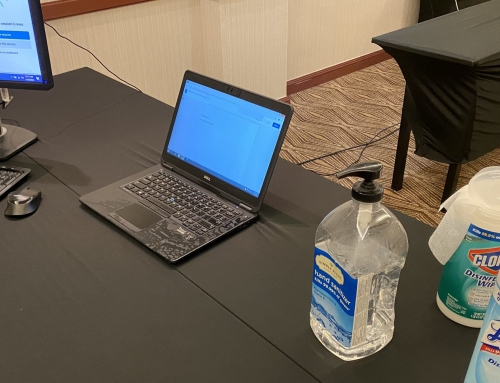In the before times, many of us typically commuted to our place of work, did our job in person and went home. Some of us would be finished working at that point and others of us perhaps put in a few extra hours here and there as needed.
Then came COVID-19
For those of us that could stay at home, we did. We were locked down after all, and we were scared for our health and the health of our loved ones. But 2020 turned into 2021 and even without the severe lockdown we had previously, many of us continued to work at home with limited opportunities for in person socialization, especially for work purposes. There were also less opportunities for in person socialization on a personal level which managed to isolate us even further.
Just as we were wondering whether this was it, came the rise of the Delta variant followed by the incredibly contagious Omicron variant. 2021 turned into 2022, and many of us continued to work at home. Even now in March of 2022 – even as Covid cases in many places are steeply falling – the most that some of us are hearing is that at some point in the future we may be going back to the office. We heard that line before, many times in fact, so we’re not certain if it’s really going to happen. And would we even want to go back if we were invited to do so?
Should we go back to the office?
Some are now saying that we should never go back to the office. In fact, we’re sometimes told that it’s clear that 100% remote work is just fine. We can do our jobs and get our work done, and in fact, all that matters when we work are our deliverables, our products. Yay – look at what the pandemic has taught us, isn’t it great?
No. It’s not great! In fact, it’s separating a not insignificant percentage of us from one of the core aspects of our being – our humanity.
The value and loss of social cohesion
We are all products of millions of years of evolution: survival through social cohesion. By sticking together and forming tight bonds we could better handle what the hostile world would throw at us.
The modern world has already weakened those socially cohesive bonds. We don’t live and work in tight-knit communities anymore. Our friends and family are often separated by far distances. Sure, we get to see them, but not as frequently as perhaps we’d like.
Even before the pandemic, that lack of proximal social cohesion could be lonely. It’s hard on our bodies, our minds, our souls to not be with other people. But before, there was a way out! While working full-time in an office certainly had its downsides, it allowed us to interact closely with other people who were physically present.
COVID-19 degraded the social fabric of our workplace
They may not have been our closest friends and family members. But they were people, and we were together. We could enjoy small talk with them. Maybe there was a birthday cake, or someone brought in donuts in the morning for everyone to enjoy together. Maybe we’d spontaneously go out to get lunch at the food truck together or even take a walk around the parking lot as we talked through our struggles.
But COVID-19 degraded the social fabric of our workplace – so where do we go from here?
Even if businesses aren’t going back to full-time in person office work, they should still provide in person opportunities
Does being in person all the time make sense when we know we have the technology to support remote work? Probably in many cases, the answer is a resounding “no.”
Yet businesses should also be mindful of the value of in person interaction for the happiness and social cohesion of their employees as well as recognize that in person interaction leads to spontaneous and, in fact, better communication – and that leads to innovation which ultimately helps drive business.
Some employees may legitimately have an ever-present fear of illness
The risk of illness is still a legitimate concern whether or not one has underlying health conditions. Truth is, even beyond COVID-19, people are now more scared of illness in the workplace generally.
Businesses should be aware of differing levels of concern around health risk and also make sure that nobody is penalized – financially or otherwise – for not coming in when they are or might be sick with COVID-19 or anything else.
People feel safe at home and the road back into the office may cause stress and anxiety
Also, people have found comfort in the safety of their own home, and convenience in better management of childcare and family situations.
Businesses should recognize this and encourage in person opportunities whenever possible while also making sure to provide accommodations for those that aren’t ready yet or really need to remain remote for the long term.
Businesses should provide open dialog and do more than just say they value the emotional wellbeing of their staff but also provide a support infrastructure as such. Businesses that have come back should make sure to schedule virtual facetime with those that are still remote so that they don’t feel – and aren’t – forgotten. And businesses should provide opportunities for these employees to have a hybrid and perhaps gradual return situation that works for everyone and lets employees recognize that their employer genuinely cares.
Hybrid collaboration can be the most difficult of all
Hybrid collaboration may be the most difficult form of collaboration – that is, having a meeting where a bunch of people are together in the room and others are remote.
Ideally, in person opportunities should be focused first and foremost on those points in the workflow that are most enhanced by group collaboration. But even then, those who are in person should try to go out of their way to also stop and check in during the meeting with those who are remote.
Simultaneously, we sometimes have a tendency to multitask when alone and not on camera. So those who are remote should do whatever they can to stay extra present in the moment, similar to what we are more forced to do when physically together in a room.
No office doesn’t have to mean no in person opportunities
Some businesses have completely abandoned the idea of having leased or owned physical space, deciding that it is more efficient to have a completely remote workforce.
But for those who are geographically close, businesses could still provide rented conference rooms in shared spaces for collaboration when helpful. Or at worst, even encourage employees to meet at a coffee shop to at least be able to collaborate and communicate together.
And for those that aren’t geographically local, businesses could use some of that money saved on not owning or leasing a building space to bring those employees to the same spots at least occasionally. Having in person time at periodic intervals like this can help pave the way for better communication when not together.
Employees should take advantage of in person opportunities
It’s not always feasible to work in person, but when opportunities present themselves, when given the option of working in person, I’d encourage everyone to say yes – to take advantage of these opportunities at least some of the time. Even if it seems scary at first to resume some of the old ways, it also provides an opportunity to appreciate how valuable and meaningful in person human contact can be.
It’s possible to spend in person time with colleagues even if not co-workers
We’re not quite at the point where meetups and networking events are fully back to being in person, but they will be soon.
Whether someone is completely remote from their employer or perhaps is a freelancer or contractor and may not have co-workers, there is still great value in being in person with others in a business setting even if not those that we’re directly working with.
When possible, I’d encourage anyone who can attend to take advantage of these in person meetups and networking opportunities. Not only can it be a nice way to ease back into being with others in work settings, but it also can be really good for future career opportunities.
Flexibility is key
Ultimately, one lesson that we’ve learned from this pandemic is that flexibility is key. The world is especially stressful, so businesses should do their best to support flexibility in work, even while encouraging in person opportunities for collaboration.
And employees should do whatever they can to remain flexible and understand that these times are difficult for businesses too, as decades of operational standards have just gotten completely upended.
Kindness is critical
Being unkind in the workplace was never a good thing, but all the more so now. With even more asynchronous and technology-mediated communication in this post-Covid world, and so much anxiety, anger and hostility seemingly around every corner, everyone really needs to do their absolute best to be kind, understanding and gentle.
This isn’t the time for harsh words. Criticism should be delivered with much gentleness and should never be delivered at all if there are no concrete suggestions for improvement with the opportunity to do better next time.
Being in person is not for everyone
Whether for health, family circumstances or anything else, there are going to be some of us who never want to go back in person. Businesses should accept this and, while not forcing 100% remote work, businesses should also not force 100% in person work as long as it’s possible to do work remotely.
As for me
I’m a freelance qualitative user experience researcher. My whole job is focused on communication with people. As such, even before COVID-19, when half my work was already remote, I’d jump at opportunities to be in person with clients and research study participants – and that is still true.
I’ve certainly had my own stresses and anxieties throughout this period but also know how much I need to be in person with others for my own mental health. I’m fortunate to live in a socially cohesive community but simultaneously have still spent more time being physically separated from people during the workday than ever before.
And I’m going to do my best to be kind and understanding and simultaneously only take on projects from clients who are also kind and understanding. I’m going to do my best to watch my words and not cause stress to others and hope that people watch their words with me.
As I do all that, I’m going to stand on whatever soapbox I can get and shout it from the rooftops:
People are awesome and always have been!
Opportunities for technology to allow remote communication and collaboration are now more amazing than ever!
But, if at all possible, do your best to find mindful ways to have in person interactions in work contexts.
And even while we can all agree that technology-mediated communication and relationships can absolutely work, there is something so incredibly special about being together in person.
Please let’s never forget that.
Image: Bigstockphoto.com / World Image




